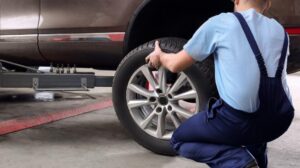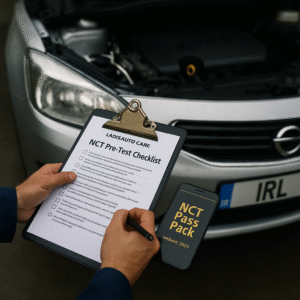When your car’s internal computer detects an issue with the engine or transmission, it triggers the check engine light. The causes for this warning can vary widely, from minor issues like a loose gas cap to more serious problems such as a faulty catalytic converter. In some cases, it could even indicate internal engine failure. Addressing the check engine light promptly can prevent a minor issue from escalating into an expensive and time-consuming repair. Ignoring it might lead to significant damage, so it’s crucial to diagnose and fix the underlying problem as soon as possible.
Why is Your Check Engine Light On?
Common reasons for a check engine light to illuminate include:
- Loose gas cap
- Internal engine issues
- Catalytic converter problems or theft
- Faulty spark plugs, spark plug wires, or ignition coils
- Malfunctioning oxygen sensor
- Damaged mass airflow sensor
- Poor-quality fuel
These issues range from minor fixes to serious repairs, and addressing them promptly can prevent further damage to your vehicle.
What to Do When Your Check Engine Light Comes On
Noticing your check engine light on? Here’s what to do:
Assess Driving Conditions: Pay attention to how your car is driving. If something feels off, head to the nearest mechanic immediately. If it seems to be running fine, perform a few simple checks before seeking professional help.
Check the Gas Cap: A loose gas cap is a common reason for the check engine light to turn on. Ensure your gas cap is tightly secured and in good condition.
Consider Fuel Quality: If you recently filled up with gas, poor-quality fuel might be the cause. If your vehicle requires premium gas, using regular gas can trigger the light. Have a professional drain the tank if necessary.
Read the Diagnostic Code: If you suspect another issue, use an OBD-II scanner to read the diagnostic code from your car’s internal computer. If you’re not experienced, visit your local service station for a mechanic to diagnose and fix the problem.
Understand the Severity: Newer car models may have different colors or modes for the check engine light. A flashing light, or a red light, indicates a serious issue requiring immediate attention. A solid yellow or orange light suggests a less severe issue but still warrants a professional check.
Why You Shouldn’t Ignore Your Check Engine Light
Ignoring the check engine light can lead to more costly and time-consuming repairs. The initial problem can worsen, affecting other parts of your engine or transmission. Additionally, you may fail your next car inspection, as the light needs to be off to pass.
Implications of Ignoring the Light
Increased Repair Costs: Delaying repairs can exacerbate the issue, leading to higher costs.
Failed Inspections: You won’t pass car inspections with the check engine light on.
Insurance Coverage: Ignoring problems could result in damage not covered by insurance.
For professional advice , visit our Auto Advisor troubleshooting tool where you can instant advice and solutions regarding any vehicle issue, including engine management light queries. Taking prompt action can save you from future hassles and expenses.





